I was stoked when Facebook rolled out Dynamic creative. I mean, sure, shiny tools are always a bit exciting, but it actually had the potential to be a huge time saver and provide better insight much faster. We can throw all those creative elements in there and let them battle it out to find a champion, right?
First, allow me to first lament the shortcomings of testing creatives in Facebook Ads as it’s existed:
It picks a winner too fast, IMHO.
Seriously, it gloms on like a needy prom date to one quite often – check out the last column here that shows return on spend….582% vs. 255%:

Not stat sig results mind you, but wow, that’s a difference for a couple days after launching new creative.
The main problem is that I don’t always find this to work out so well; the algorithm picks their fave, while others might show promise and never get a shot:

To quote Kermit:

It also generally does a horrible job of instances where you mix creative types. It prefers video almost exclusively. (You can read more about this in my post on account structure, towards the end in the section called Mixing Creative Types.)
This has led to ripple effects that cause other issues in accounts I’ve taken over. The most common way this gets worked around is advertisers will have one creative per ad set in an attempt to give creatives equal footing. The idea of it 100% makes sense. The problem?
Facebook won’t de-duplicate audiences natively.
If you have Ad Set A and Ad Set B targeting the same people but with different creative, you have folks getting served both creatives. This can impact your results and skew ’em, because you might be ticking off users by showing up too often.
[Side note: Recently Facebook did release the option to split test creatives in their Split Testing feature (which was on my wishlist! yay!) so this helps a lot. However, there are drawbacks with the Split Testing feature that I detail in that post. So, it does several things well, but has one factor that drives me absolutely bonkers.]
There have been quite a few accounts I’ve managed and advised on that saw enormously improved results by making sure they didn’t have the same populations in a bunch of different ad sets….so, forcing a structure that will give creatives more runway also means it can negatively impact your results.
These are two of the main factors that make creative testing in Facebook so difficult: lack of rotation control, and then the solution for getting around it creates other problems.
Enter Dynamic Creative! Here’s how it works.
When you set up an ad set, that’s the level where you specify you want to run dynamic creative. (Kind of weird, but whatever.)
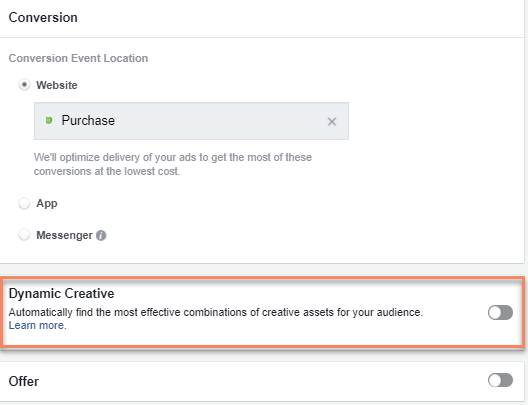
The rest of ad set creation will look normal. Where it will look different is when you get to the creative section.
In the section where you choose your images or video, you will be able to add multiple images – you can do up to 10.
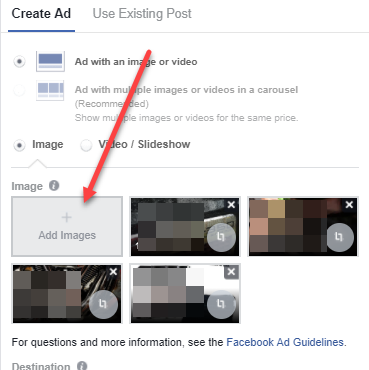
In text sections, you can hit the “add” button and create up to five additional versions of each field for testing. You can also choose up to 5 CTA buttons for testing (thought that was a nice touch):
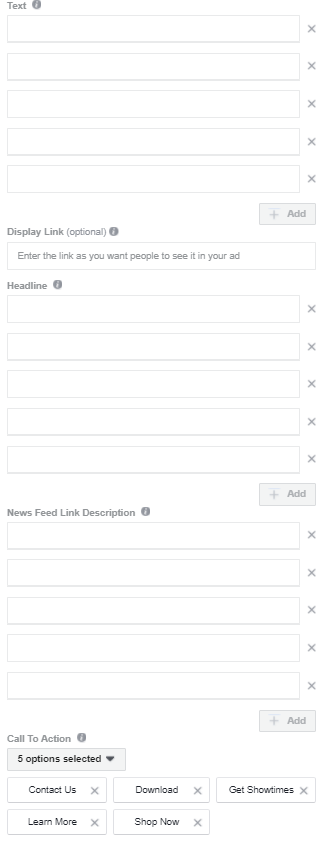
That’s basically where your part ends. Facebook will randomly pair these elements together to (we hope) find the winning combination. You can view some different variations as a preview by hitting the “View More Variations” button in the upper-right of the ad preview pane:
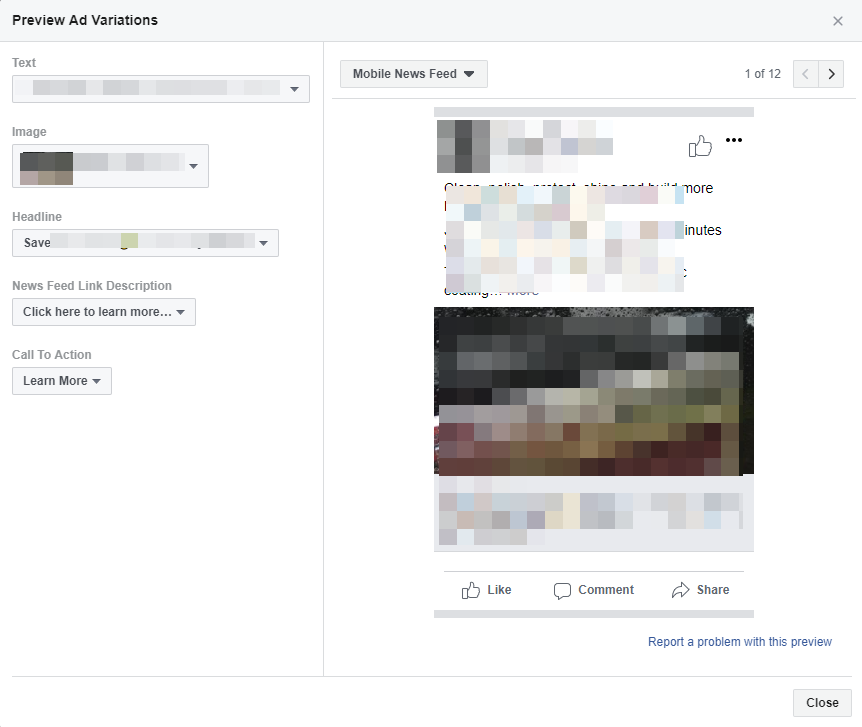
You can choose each of the image/video and text options you input, and it will assemble the ad on the right for you to view.
What I Do and Don’t Like About Dynamic Creative:
Likes:
- Button testing option was a nice touch
- It’s user-friendly to input everything
- The preview for the variations is a nice touch, as well
- Heck, it’s something better than nothing at all!
Dislikes:
Here’s my biggest problem with it….brace yourselves:
You cannot see what combination is the winner.

You can see certain performance metrics of each individual asset. Once you have launched, you will see the option in the Ads pane to view performance by dynamic asset in the Breakdowns menu:
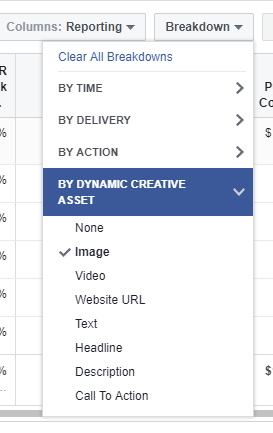
While this is somewhat helpful, it still misses a few key things, like which combination is the winner. It also does not appear to give some data at the individual asset level tied to revenue/ROAS:

Here are my other pet peeves, aside from this ginormous one:
- The text fields don’t behave normally. When you add a new ad text variation, hitting “enter” does not insert spaces, so you wind up with all your text wrapping as a paragraph. (Fix: type the format you want in notepad, then copy/paste and it works fine.)
- You can’t test multiple URLs. You are still only testing one…this makes landing page testing not really a thing.
- You can’t mix static images with video for testing.
- You can’t test carousel ad units.
Do They Work Better Than Static?
Largely, it seems to….but I think how far it can go is largely tied to the quality of your creative to begin with.
I recently took over a sizable account. The creative wasn’t necessarily bad or neglected, but it was a totally bad fit for an e-commerce crowd, and the targeting was a mess. There was a lot to fix, so the results improved, but some of that related to targeting clean up.
I cleaned up some of the ad groups that the previous agency had set up, because there were some nuggets and history worth preserving. At that point, I let a version with dynamic creative run that they had set up, and then there was also a non-dynamic ad set using some of the same creative assets that they had also run. Targeting was the same, and ultimately the dynamic creative worked better for ROAS (309% vs. 337%), though the CPM costs were notably higher ($11 CPM for dynamic, $8 for non-dynamic).
…But It Can’t Beat Good Creative, Period.
In another ad set, I duplicated the ad set, made up entirely new static creative, and it beat the Dynamic version. However, this still works in our favor long term, because we saw a quick example of what worked, and are using that to iterate on additional versions in a dynamic set up.
So, in other words, don’t rely on dynamic to outperform creative that is simply a better fit for an audience.
How I Opt To Use It Currently:
Based on this, I haven’t been relying on Dynamic creative for testing brand-new creative versions. It lacks the combined data to tell me an absolute winner, which doesn’t help me as future creative comes about.
I’ve instead been taking ones I know to be winners on their own, and then combining THOSE to run in Dynamic. It’s like I pick the play-off teams, but I’ll never know exactly who wins the title.
It’s not perfect, but it’s what we’ve got. (For now!)

